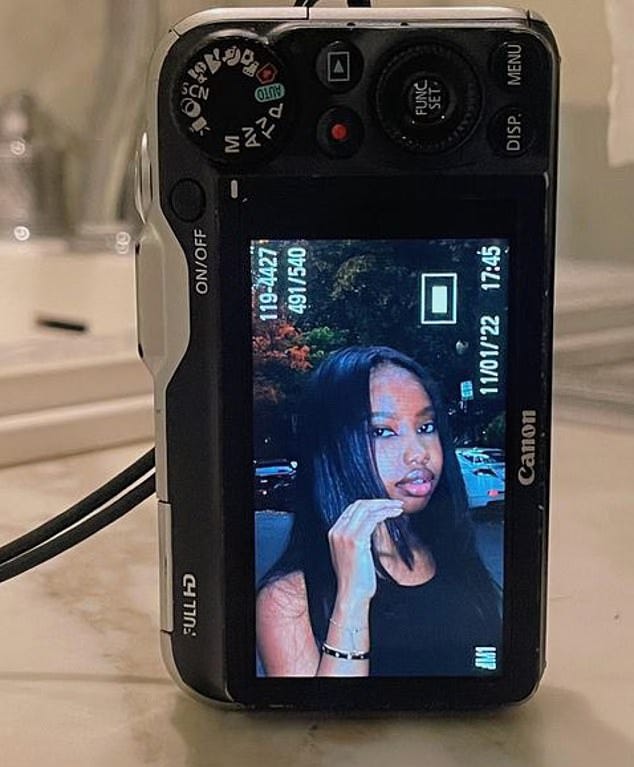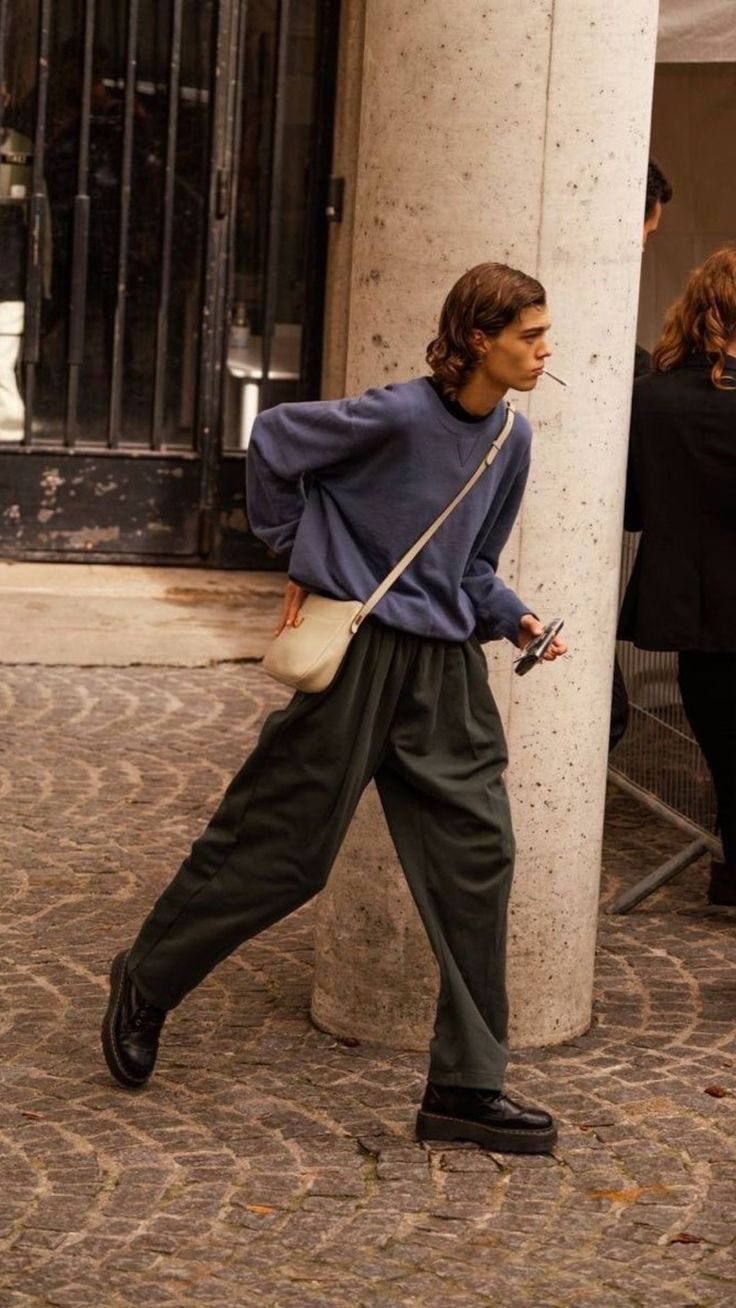The intersection of Millennials and Gen Z in fashion and lifestyle is a pretty fascinating topic, especially when you consider the role of nostalgia and shared cultural experiences. Both generations, though separated by different life experiences, are gravitating towards a collective desire for the past. I’ve been doing a lot of thinking on this and wanted to explore how these two groups, which might normally have diverged in their tastes, have come to find common ground in fashion, lifestyle, and culture.
As a Millennial, I've grown up in a generation that bridged two different worlds: the analog and the digital. The '90s were an era of findings, explorations, and subcultures all requiring physical contact. If someone was into a certain music scene, they found their community at shows or record shops. Fashion was not as accessible as it is in today’s society; it took time to learn about what was in style, often from seeing what one's favorite artist was wearing in a magazine or at a concert. For many Millennials, these are touchstone moments linked to deeper memories of a simpler, more analog life.
Our generation remembers a time before the internet everywhere. We find that the thrill with finding a new band or fashion brand often came from friends or word of mouth. You would come up with your look based on what you could afford or find at local stores, second-hand shops, or from hand-me-downs from friends and older siblings. Without Pinterest and Instagram, discovery happened at a snail's pace.
This era — the 90s and early 2000s — has become a cherished time for many Millennials. It represents a golden age, before the homogenization of culture through algorithms (which I spoke about here), where individuality was shaped through personal experiences and not driven by the need to keep up with social media trends. But as we entered the digital age, it became clear that the rate of cultural and fashion evolution began to slow down. Unlike previous generations who saw stark differences between the decades (think the 60s, 70s, and 80s), Millennials have largely witnessed the recycling of ideas, trends, and aesthetics over the past two decades. And now, after 20+ years of digital life, many of us are yearning for the feeling of those formative years — a pre-internet world that feels far away but still shapes us.
Gen Z, on the other hand, was born into the digital age. Their formative years were shaped by rapid technological advancements and a world where the internet was already central to daily life. Unlike Millennials, they don’t have the direct memory of a world before social media, smartphones, and streaming services. Yet, despite being digital natives, there’s a remarkable trend among Gen Z toward embracing the very past that many Millennials are nostalgic for.
For Gen Z, retro fashion, music, and lifestyle choices offer a kind of secondhand nostalgia. They are discovering the joy of subcultures, the slower pace of life, and the intentionality that came with pre-digital living. But instead of experiencing these things firsthand, they are curating their understanding of the past through YouTube videos, TikTok, and online thrifting platforms like Depop, etc. It’s a digital interpretation of an analog era, but one that has resonated deeply with them.
What’s interesting is that Gen Z is not only adopting trends from the 90s and early 2000s, they’re picking up the pieces of what was left behind by previous generations and breathing new life into them. Take, for example, the resurgence of Y2K fashion — low-rise jeans, metallics, chunky sneakers, and butterfly clips — all of which have been embraced by Gen Z. But they’re doing it with their own twist, mixing in sustainability, gender fluidity, and body positivity, things that were less prevalent during the original heyday of these trends.
What’s truly fascinating is how, for perhaps the first time in recent history, two distinct generations are yearning for many of the same things. Normally, there’s a clear division between what older generations hold dear and what younger generations are interested in. However, Millennials and Gen Z seem to be gravitating towards similar aesthetics, values, and cultural markers.
Both generations have found themselves drawn to retro aesthetics and the lifestyles of past decades. For Millennials, it’s a return to what we knew and loved; for Gen Z, it’s the discovery of something novel and exciting. Vintage shopping has become a shared hobby, with both groups frequenting thrift shops, not just for the affordability but for the authenticity that comes with owning a piece of history. Vinyl records, once on the verge of extinction, have made a massive comeback, with Gen Z collectors flocking to the medium in droves, much like Millennials did during their indie music days.
The blending of these two generations can also be seen in how both approach fashion and identity. Personal expression through fashion has become central to both, with an emphasis on individuality, creativity, and sustainability. Gen Z’s penchant for upcycling and thrifting aligns perfectly with the Millennial’s love for nostalgia, as both groups seek authenticity in a world that often feels over-curated.
One might ask why this convergence is happening now. Part of the reason, as I see it, is that the last 20+ years have not seen the same level of cultural progression that previous generations experienced. The rapid technological growth of the early 2000s might have set the stage for innovation, but when it comes to fashion and lifestyle, there has been less differentiation between decades. Trends have become cyclical, with the internet playing a role in accelerating the recycling of aesthetics.
Unlike the cultural shifts seen in the late 20th century, where new movements in fashion and music felt distinct, the 2010s and 2020s have largely been about looking back. Millennials, in particular, have been stuck in a loop of reviving past trends, perhaps because the nostalgia for simpler times is more alluring in an age where everything feels immediate and overwhelming. Meanwhile, Gen Z, having grown up in a world dominated by screens, sees the pre-digital world as almost exotic — a time worth exploring and adopting in their own way.
In a way, this intersection is a beautiful thing. Millennials and Gen Z are finding common ground in their love for the past, even if they are coming at it from different angles. It’s rare to see two generations so aligned in their appreciation of the same cultural artifacts, but in doing so, they’re shaping a new, shared vision of what fashion and lifestyle can be. Retro is no longer just about nostalgia; it’s about the blending of past and present to create something new for today.
The cultural overlap of Millennials and Gen Z’s fashion and lifestyle preferences presents a dynamic cultural space wherein the tradition of generational boundaries is increasingly blurred. While distinct differences still exist, common values related to sustainability, authenticity, and digital engagement create a significant overlap. In turn, brands and businesses that can successfully navigate this intersection by respecting the unique characteristics of each generation will be best positioned for future success.
Whether it’s through retro-inspired fashion with modern sustainability practices, or tech that brings analog experiences into the digital realm, the potential is vast. Brands like Nike and Adidas, which have mastered the art of re-releasing previously successful styles, are continuing to increase their value through this cross-generational appeal. Smaller brands are tapping into this by offering products that merge timeless designs with modern values — creating something that speaks to both the longing for the past and the forward-thinking ideals of today’s youth.
As both groups continue to embrace these shared values and aesthetics, we might see even more cross-generational collaborations in fashion, music, and culture. It’s a testament to how powerful nostalgia can be — not just as a longing for the past, but as a tool for connecting us across time and space.














